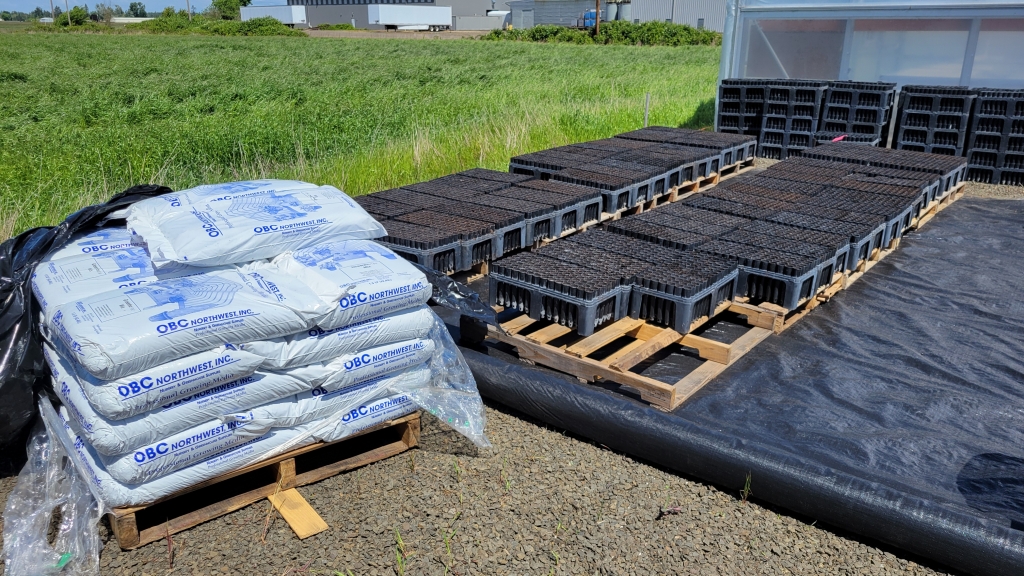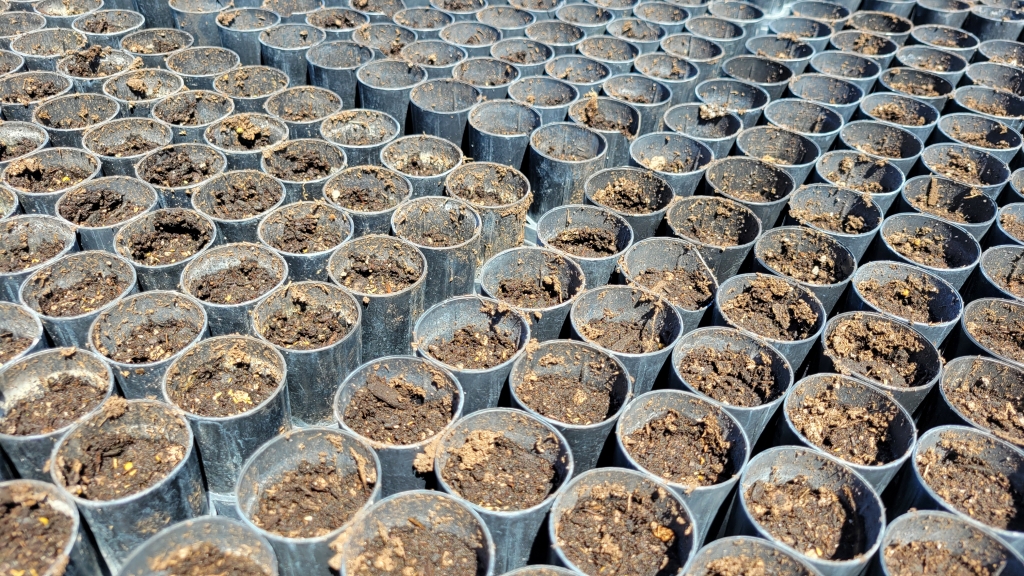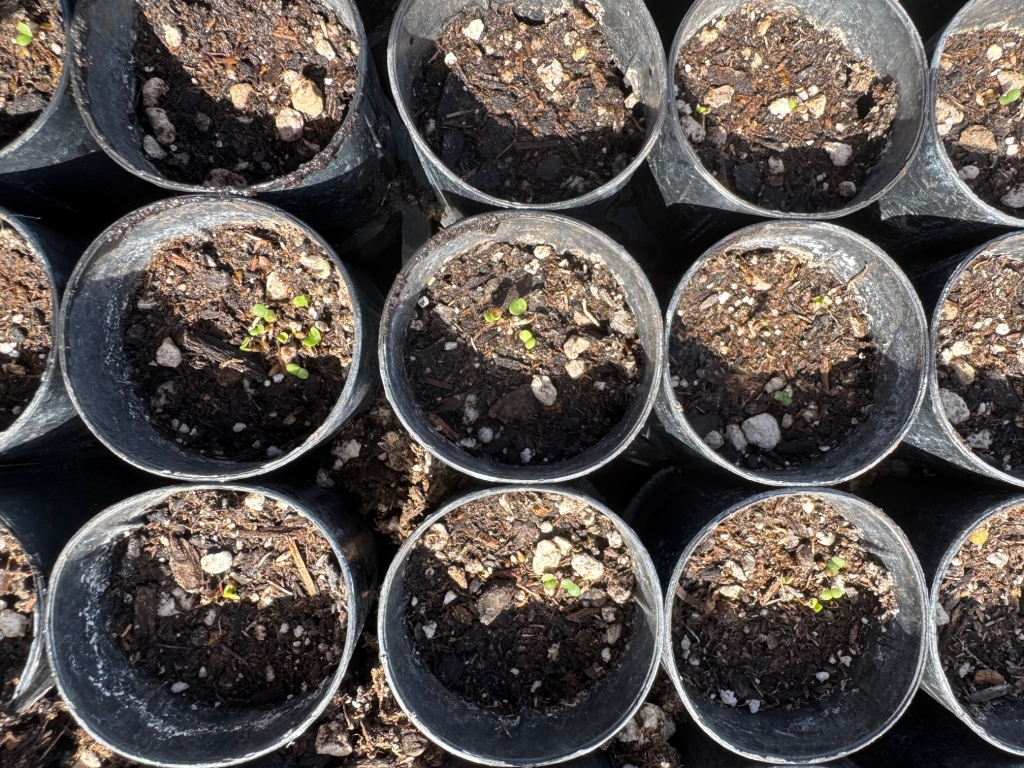Sagebrush in Prisons Grows Hope
by Karen Hall, May 2025
Last week, a dedicated team of volunteers with IAE carefully placed low sagebrush (Artemisia arbuscula) seeds into tall conetainers – a little over 12,000 seeded. Ultimately, these will be sent to Klamath Falls for wildland restoration near there. Just down the road in Wilsonville, a crew of incarcerated women at Coffee Creek Correctional Facility sowed a similar amount of Mountain big sagebrush (Artemisia tridentata ssp. vaseyana), destined for a similar location.

In April and earlier in May this year, three crews of incarcerated adults from two other Western states (Wyoming and Idaho) placed seeds of sagebrush (three varieties or subspecies), Antelope bitterbrush (Purshia tridentata), and rabbitbrush (Ericameria nauseosa) into tall conetainers – around 115,000 total sown (including the above count).

While our total number of sagebrush sown is down from previous years, there was no dampening of the spirit on display by the people who completed the work – from adults in custody, Department of Corrections staff (in Wyoming, Idaho, and Oregon) who facilitate the work, volunteers, and IAE staff who coordinate, educate and lead these efforts across disparate and distinct groups of people. For sure, this work is physically hard! IAE staff – Annie Lamas, Svea Bruslind, Alyson Singer, Ariel Nelson, and I – provide direction, but there is no substitute for the self-organizing that occurs once people settle into the process.

I think it’s the shared goal of restoring nature that people believe in that motivates them to organize toward efficient seeding and planting, while also connecting as human beings. Though all left tired, smiles were visible and a sense of satisfaction among volunteers and staff was palpable.
I like to think that the sagebrush seeds sensed the satisfaction and love. Since we observed germination as early as five days later, I’ll take that as a sign. Maybe they mean to say, “Thanks for your efforts in giving me space for life!”
At IAE, we are thankful to the people who make this work possible: volunteers, adults in custody, Department of Corrections personnel, and our partners at the Bureau of Land Management (BLM) – and we hope the seedlings hear it, too!
